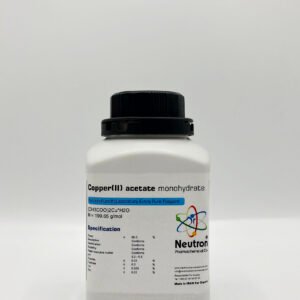Lithium carbonate
| Chemical formula | Li2CO3 |
| Density | 2.1 g/cm3 (20°C) |
| Molar mass | 73.89 g/mol |
| Bulk density | ~250 kg/m3 |
| CAS number | 554-13-2 |
| HS Code | 28369100 |
| EC number | 209-062-5 |
| Storage | Without limitation |
| SDS | available |
| RTECS | OJ5800000 |
| R phrase | R 22-36 |
| S phrase | S 24 |
| Odour | odourless |
| Form | solid |
| Color | white |
| Assay | ≥ | 98.5 | % |
| Description | Conforms | ||
| Identification | Conforms | ||
| Chloride | ≤ | 0.05 | % |
| Sulfate | ≤ | 0.4 | % |
| Heavy metals | ≤ | 0.005 | % |
| Calcium | ≤ | 0.05 | % |
| Iron, Aluminium | Conforms | ||
| Sodium | ≤ | 0.3 | % |
| Loss on drying | ≤ | 1 | % |
Lithium carbonate is a white crystalline inorganic salt widely known for its use in the treatment of bipolar disorder and as a raw material in lithium-ion battery production.
🏭⚗️ Production
It is typically produced from lithium-containing minerals such as spodumene or from lithium brines through a series of extraction, precipitation, and purification steps, often involving reaction with sodium carbonate to yield lithium carbonate crystals.
🔬 Properties
The chemical formula is Li₂CO₃ with a molar mass of approximately 73.89 g/mol. It appears as a white, odorless crystalline powder, is slightly soluble in cold water and more soluble in hot water, and decomposes at high temperatures to form lithium oxide and carbon dioxide. It is stable under normal storage conditions and is hygroscopic to a slight degree.
🧪 Applications
Lithium carbonate is widely used in the pharmaceutical industry as a mood stabilizer for managing bipolar disorder, in the manufacture of ceramics and glass to improve thermal shock resistance, and as a key precursor in the production of lithium-ion batteries. It is also used in aluminum smelting, in the synthesis of other lithium compounds, and as a flux in metallurgy.
⚠️ Safety
This compound can be harmful if ingested in large amounts and may affect the central nervous system, kidneys, and thyroid with prolonged exposure. Therapeutic use requires careful medical supervision due to its narrow therapeutic index. Handling requires the use of gloves and eye protection, and it should be stored in a tightly closed container in a cool, dry, and well-ventilated area away from acids.





